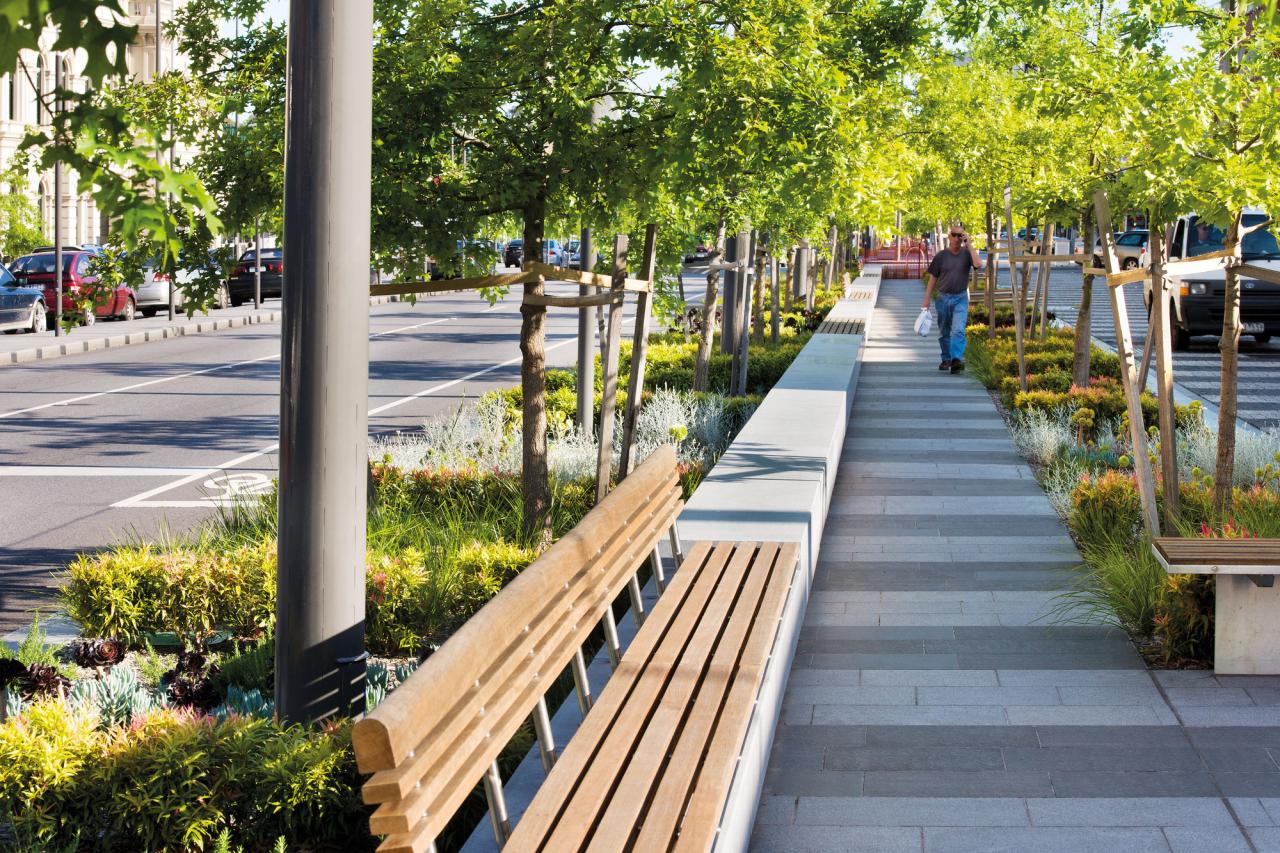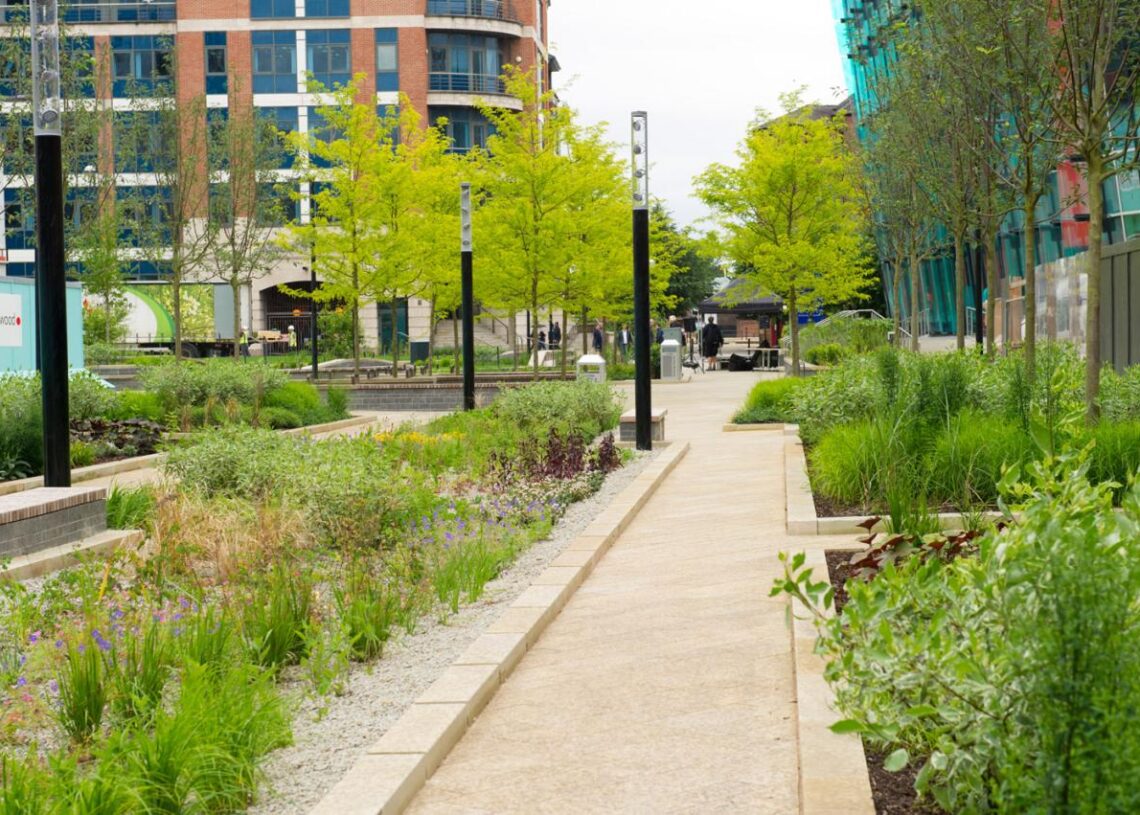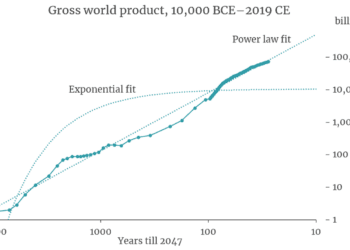In a world of increasing urbanization, where cities are becoming the central hubs of human life, the concept of the public realm has never been more critical. Far from being just the spaces between buildings, these are the shared arenas of our urban existence—the parks, plazas, streets, and squares that define a city’s character and foster a sense of community. The rise of new urban challenges, from climate change and social inequality to technological disruption, is compelling a profound and necessary transformation. This is a story of reimagining urban spaces, a deliberate and strategic effort to design public realms that are not only beautiful and functional but also resilient, equitable, and democratic. Understanding the core principles of this movement, the innovative design strategies, and the profound impact it has on the quality of urban life is crucial for urban planners, policymakers, designers, and every citizen who believes that a great city is defined by the quality of its shared spaces.
Why the Public Realm Needs a New Vision

For much of the 20th century, urban planning was driven by a focus on automobile traffic, with city streets and public spaces designed for cars, not people. The result was often a fragmented, car-centric urban landscape that lacked a sense of community and connection. Today, a new vision is taking hold, one that recognizes the public realm as the heart of a city’s social and cultural life.
A. The Forces Driving a New Urban Vision
Several powerful and interconnected forces are pushing cities to rethink their public spaces.
- Climate Change and Environmental Sustainability: Cities are at the front lines of climate change. The public realm is a key component of a city’s climate action strategy, from urban parks that mitigate the “heat island” effect and absorb stormwater to green streets that reduce a city’s carbon footprint.
- Social Equity and Inclusion: The public realm is a democratic space. It is a place where people from all walks of life can come together, regardless of their background or their income. A new vision for the public realm is one that prioritizes social equity, creating spaces that are accessible, welcoming, and inclusive for all.
- The Rise of Digital Technology: Technology is fundamentally changing how we use and interact with public spaces. A new vision for the public realm is one that integrates technology in a way that enhances, rather than detracts from, the human experience, from smart benches with Wi-Fi and charging ports to digital art installations.
- Health and Wellness: The public realm is a key component of a city’s public health strategy. Urban parks, greenways, and public squares provide spaces for physical activity, social connection, and mental rejuvenation, which are all vital for a healthy population.
- The Desire for Community: In an increasingly digital and often isolated world, there is a powerful human need for connection and community. A great public realm is one that fosters this connection, providing spaces for people to come together, to interact, and to build a sense of shared identity.
- Economic Development: A vibrant public realm is a powerful engine of economic development. It attracts new businesses, increases property values, and makes a city a more attractive place to live, work, and visit.
B. The New Definition of the Public Realm
The new definition of the public realm is not limited to a city’s parks and plazas. It is a holistic, interconnected network of shared spaces that are designed for people.
- Streets and Sidewalks: The street is the most fundamental component of the public realm. A new vision for the public realm is one that reclaims the street from the car, creating a public space that is safe, accessible, and welcoming for pedestrians, cyclists, and public transit.
- Urban Parks and Greenways: Urban parks and greenways are the “lungs” of a city. A new vision for the public realm is one that prioritizes the creation of new green spaces, the revitalization of existing ones, and the creation of an interconnected network of greenways that provide spaces for recreation and a habitat for wildlife.
- Plazas and Public Squares: Public squares and plazas are the “living rooms” of a city. A new vision for the public realm is one that creates public squares that are vibrant, dynamic, and welcoming spaces for people to come together for events, markets, and social gatherings.
- Public Buildings and Libraries: Public buildings, libraries, and community centers are a vital component of the public realm. A new vision for the public realm is one that re-imagines these buildings as vibrant, modern, and welcoming community hubs.
- The Digital Public Realm: The digital world is also a public realm. A new vision for the public realm is one that creates a safe, accessible, and democratic digital public realm that is built on a foundation of open data, transparency, and citizen engagement.
The Elements of a Great Public Realm

Building a great public realm requires a strategic and deliberate approach that is built on a foundation of a few key principles and design elements.
A. The Human-Centric Design Principle
A great public realm is one that is designed for people.
- Walkability and Pedestrian-Friendly Streets:A. Wider Sidewalks: A new vision for the public realm is one that creates wider sidewalks with ample space for pedestrians, street vendors, and outdoor seating.B. Traffic Calming: Streets are designed with traffic calming measures, such as speed bumps and roundabouts, to slow down traffic and make the streets safer for pedestrians and cyclists.C. Safe Crossings: Pedestrian crossings are well-lit, clearly marked, and have a short waiting time for pedestrians.
- Bikeability and Greenways:A. Protected Bike Lanes: A new vision for the public realm is one that creates a network of protected bike lanes that are physically separated from car traffic.B. Greenways and Trails: A new vision for the public realm is one that creates an interconnected network of greenways and trails that provide spaces for recreation and a safe route for cyclists and pedestrians.
- Public Transit Integration: A great public realm is one that is seamlessly integrated with a city’s public transit system, with well-lit, safe, and comfortable bus stops and train stations.
B. The Biophilic Design Principle
A great public realm is one that is designed to connect people with nature.
- Urban Parks and Green Spaces:A. New Parks: A new vision for the public realm is one that prioritizes the creation of new urban parks and green spaces, from small pocket parks to large, central parks.B. Green Roofs and Walls: Green roofs and walls are a great way to bring nature into a city’s urban landscape. They can also help to mitigate the “heat island” effect and to absorb stormwater.C. Community Gardens: Community gardens are a great way to bring people together, to provide access to fresh food, and to create a sense of community.
- Sustainable Urban Design:A. Stormwater Management: A new vision for the public realm is one that uses green infrastructure, such as rain gardens and permeable pavement, to manage stormwater runoff and to reduce urban flooding.B. Urban Forestry: A new vision for the public realm is one that plants new trees, which can help to reduce a city’s carbon footprint, improve air quality, and provide shade in the summer.C. Renewable Energy: A great public realm is one that uses renewable energy, such as solar panels on public buildings and wind turbines in public spaces.
C. The Social and Cultural Design Principle
A great public realm is one that is designed to foster a sense of community and social connection.
- Placemaking:A. Public Art: Public art installations are a great way to create a sense of place and to make a public space more vibrant and engaging.B. Public Markets: Public markets are a great way to bring people together, to provide access to fresh food, and to create a sense of community.C. Outdoor Seating: A great public realm is one that provides ample outdoor seating, such as benches and tables, which can encourage social interaction and a sense of community.
- Flexibility and Adaptability:A. Flexible Spaces: A great public realm is one that is designed to be flexible and adaptable, with spaces that can be used for a variety of activities, from a farmer’s market to a concert or a festival.B. Temporary Installations: The use of temporary art installations, pop-up parks, and other temporary interventions can be a great way to test new ideas and to engage the community.
- Inclusivity and Accessibility:A. Universal Design: A great public realm is one that is designed for people of all ages and all abilities, with ramps, tactile paving, and accessible restrooms.B. Safety and Security: A great public realm is one that is safe and secure for everyone, with well-lit streets, public art, and a visible police or community presence.C. Diverse Programming: The public realm should offer a diverse range of programming, from cultural events and festivals to fitness classes and children’s activities, that caters to a wide range of interests.
D. The Digital Integration Principle
A great public realm is one that is seamlessly integrated with technology in a way that enhances, rather than detracts from, the human experience.
- Public Wi-Fi and Connectivity:A. Universal Access: A city that provides free public Wi-Fi is a city that is committed to digital equity and inclusion.B. Smart Benches: Smart benches can provide public Wi-Fi, charging ports, and a place to sit and relax, making a public space more comfortable and convenient.
- Open Data and Citizen Engagement:A. Real-Time Information: A great public realm is one that provides real-time information on a range of issues, from public transit schedules and air quality to public safety alerts and local events.B. Service Request Apps: A new vision for the public realm is one that uses mobile apps to allow residents to report a range of non-emergency issues, from a broken streetlight to a missed trash pickup.
- Digital Art and Installations:A. Interactive Art: Digital art installations that are interactive and that respond to a person’s presence can be a great way to make a public space more vibrant and engaging.B. Projection Mapping: The use of projection mapping can be used to create stunning visual displays on public buildings and in public spaces.C. Augmented Reality (AR): The use of AR can be used to create an interactive historical experience, where residents can use their smartphone to see a historical building as it once was.
Conclusion
The public realm is the heart and soul of a city, and the strategic practice of reimagining urban spaces is a critical task for modern leaders. A great public realm is one that is designed for people, that connects them with nature, that fosters a sense of community, and that is seamlessly integrated with technology.
This is a deliberate process of building a city on a foundation of a few key principles: human-centric design, biophilic design, and social and cultural design. The cities that get this right will not only be more resilient, more sustainable, and more prosperous but will also be more humane. In the end, a great city is not defined by its skyscrapers or its highways; it is defined by the quality of its shared spaces, its public realm, which is the ultimate measure of a city’s success.












